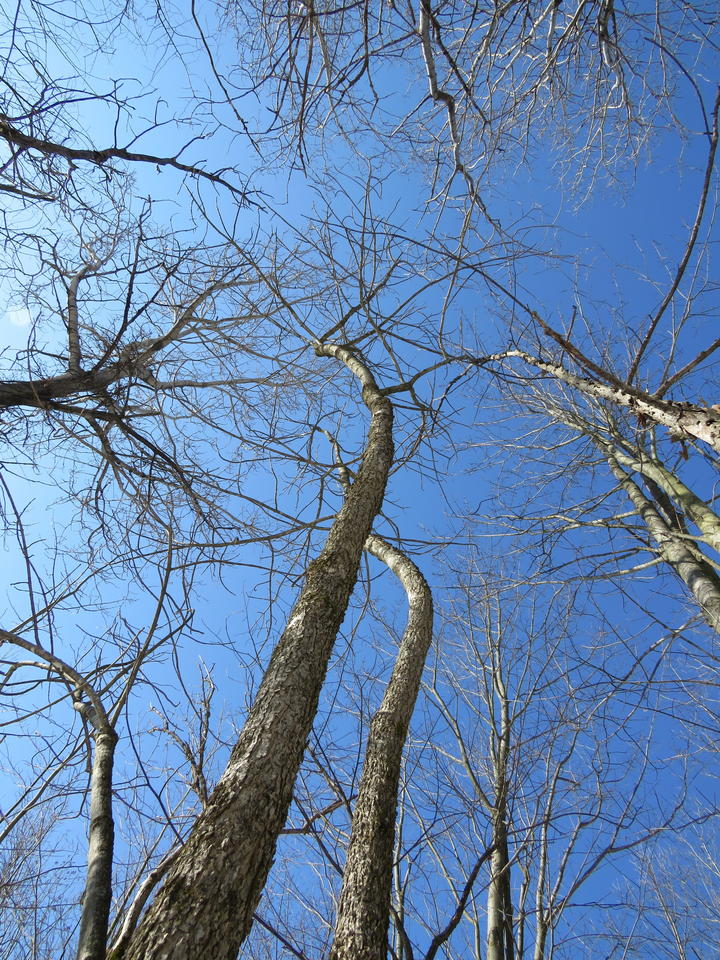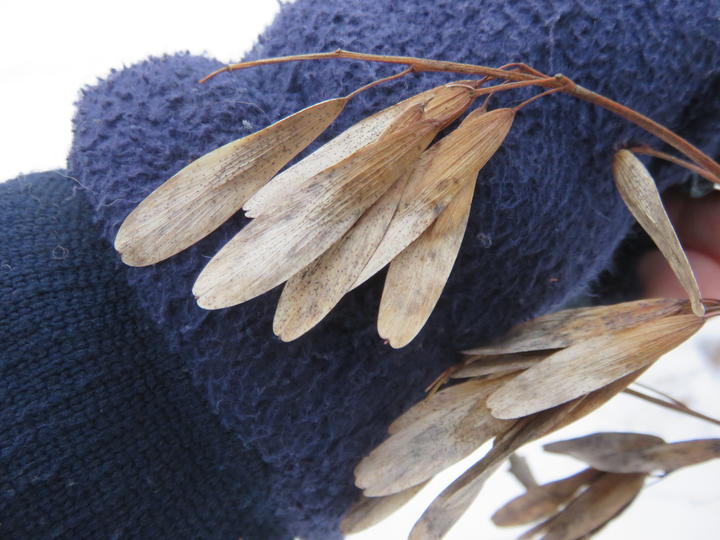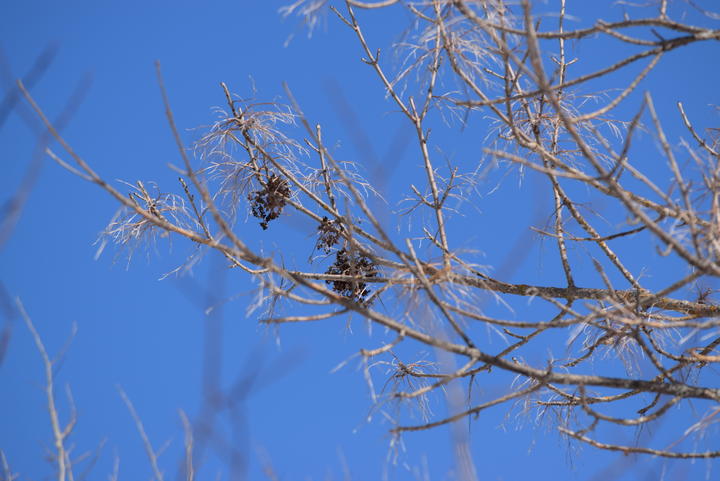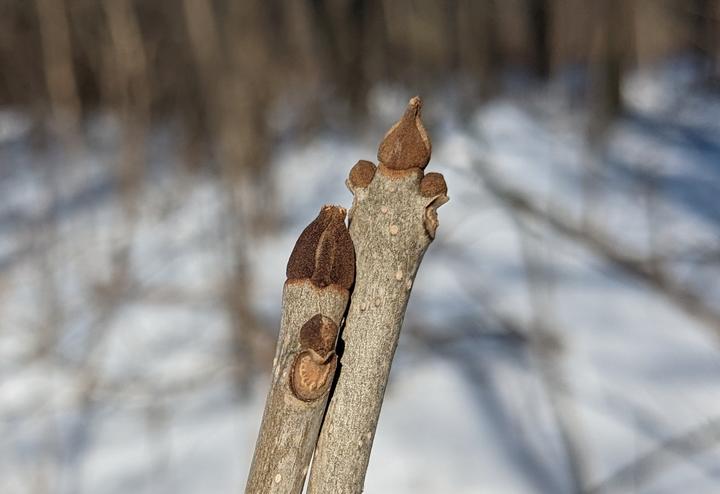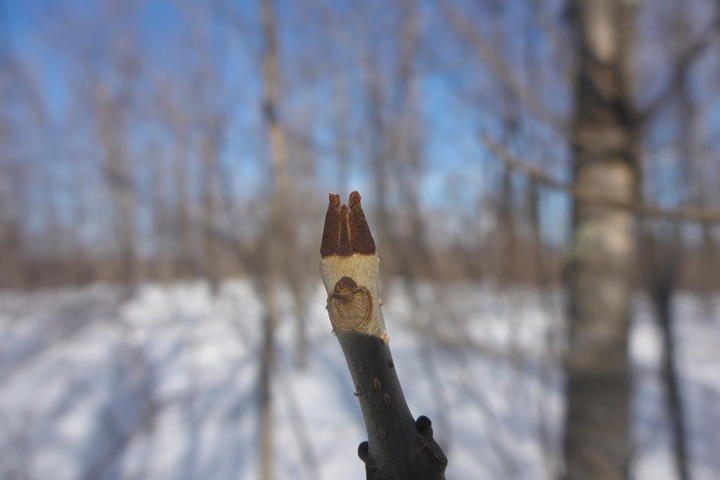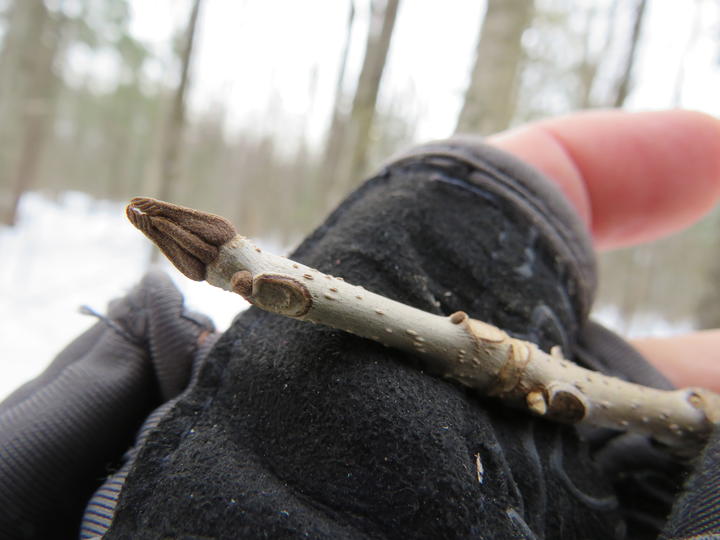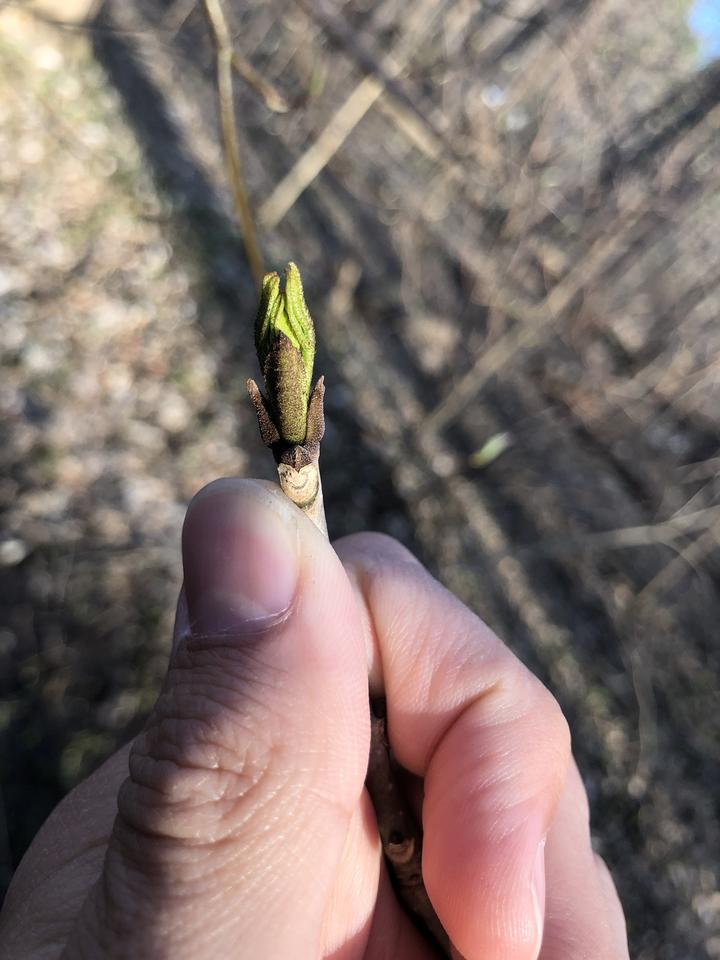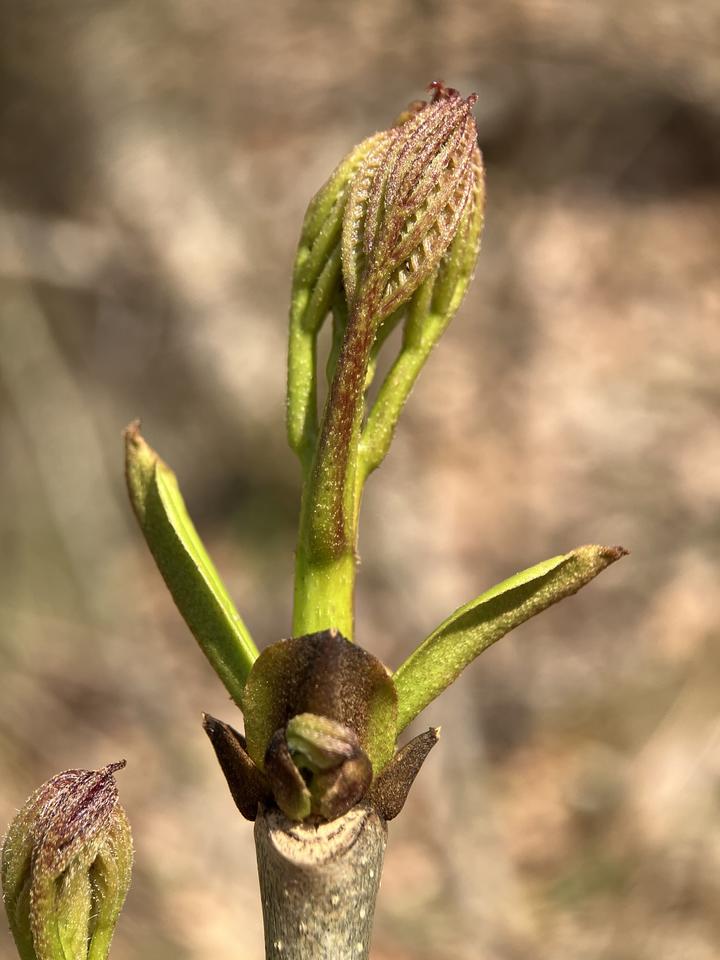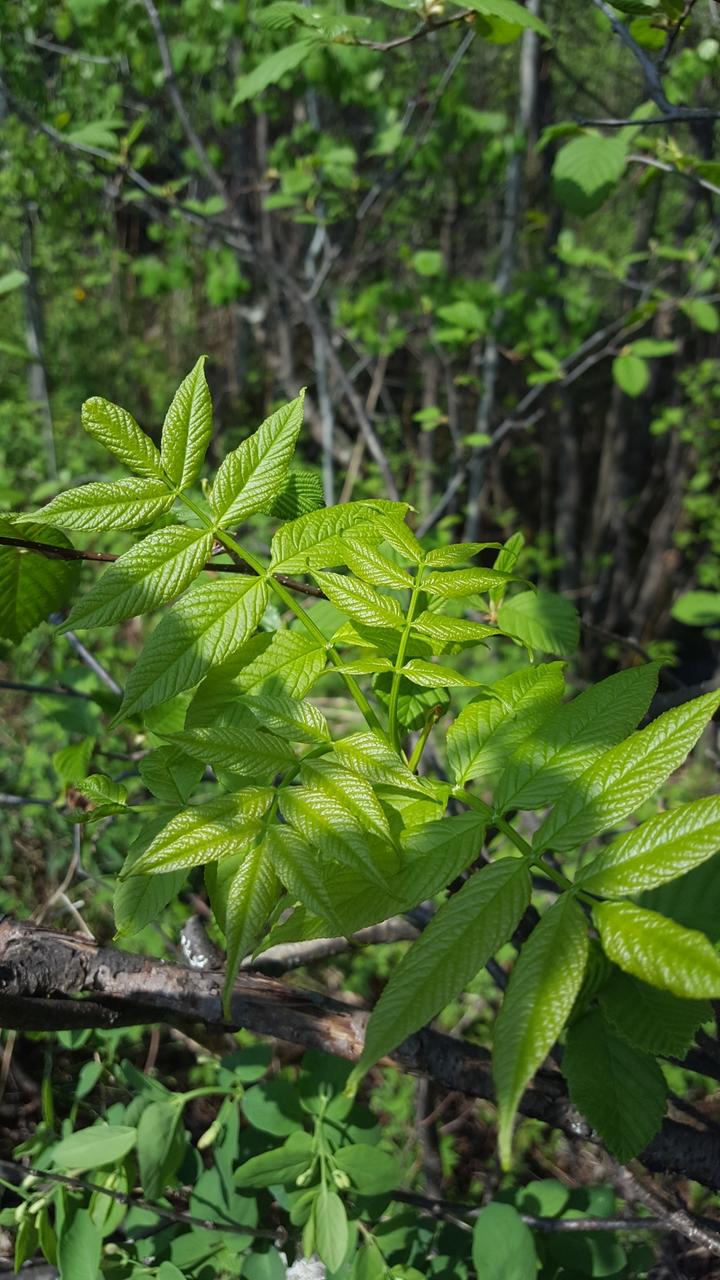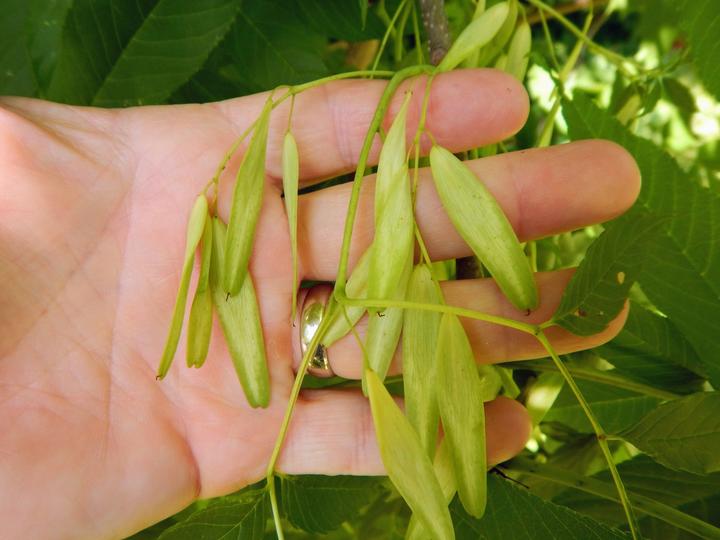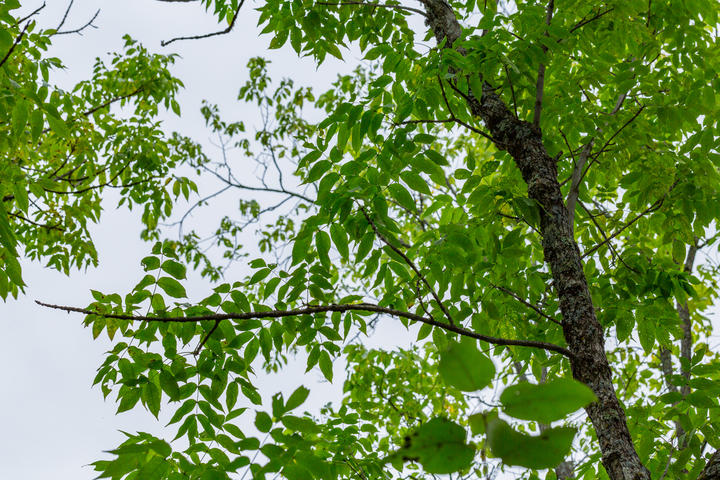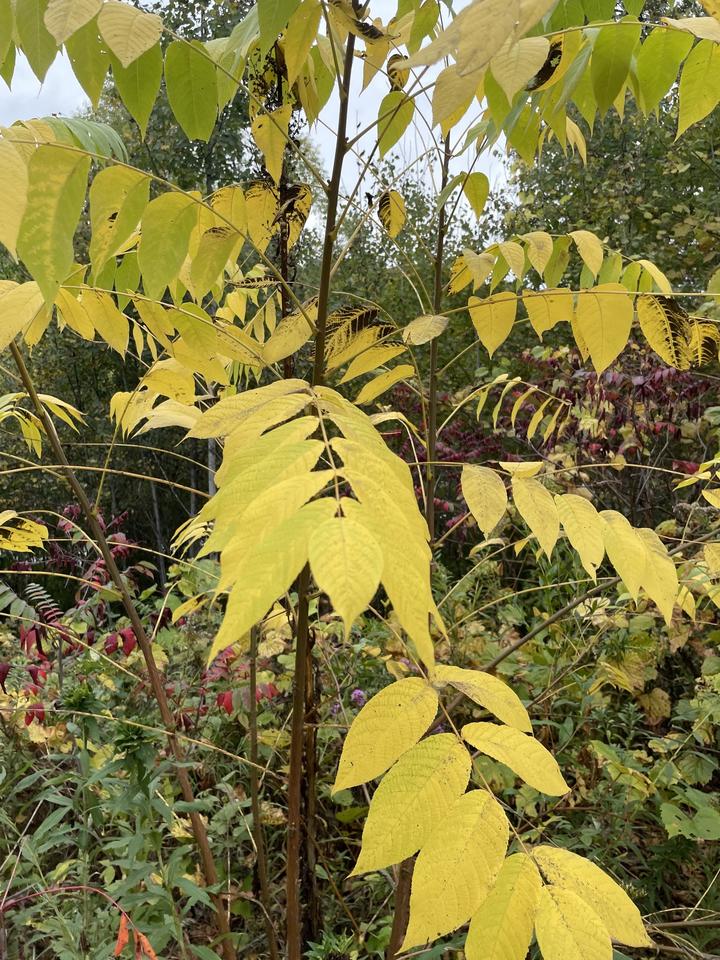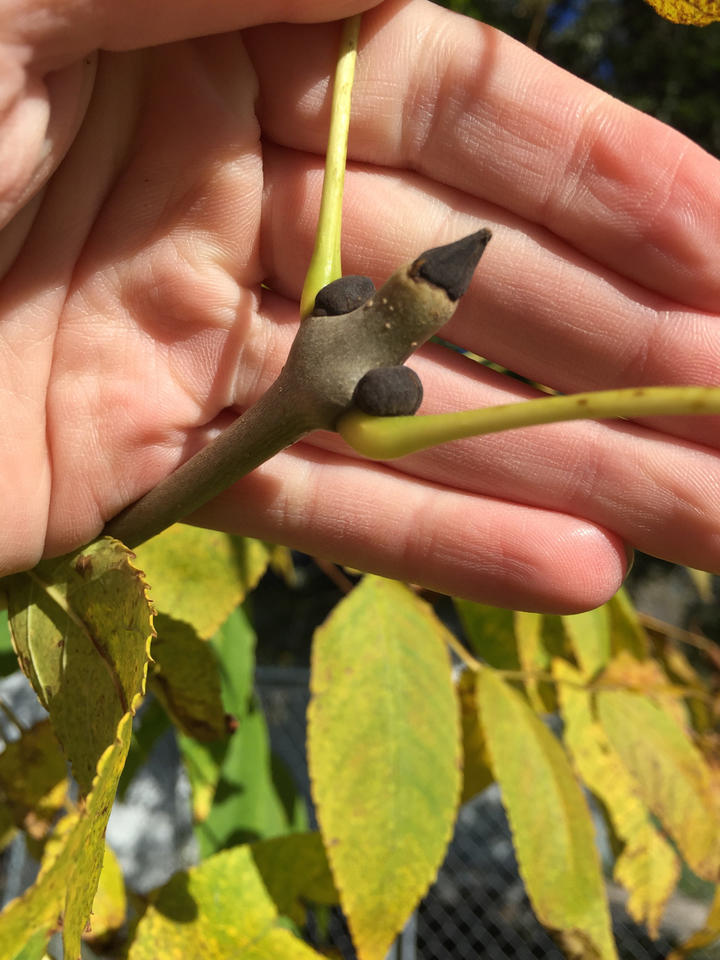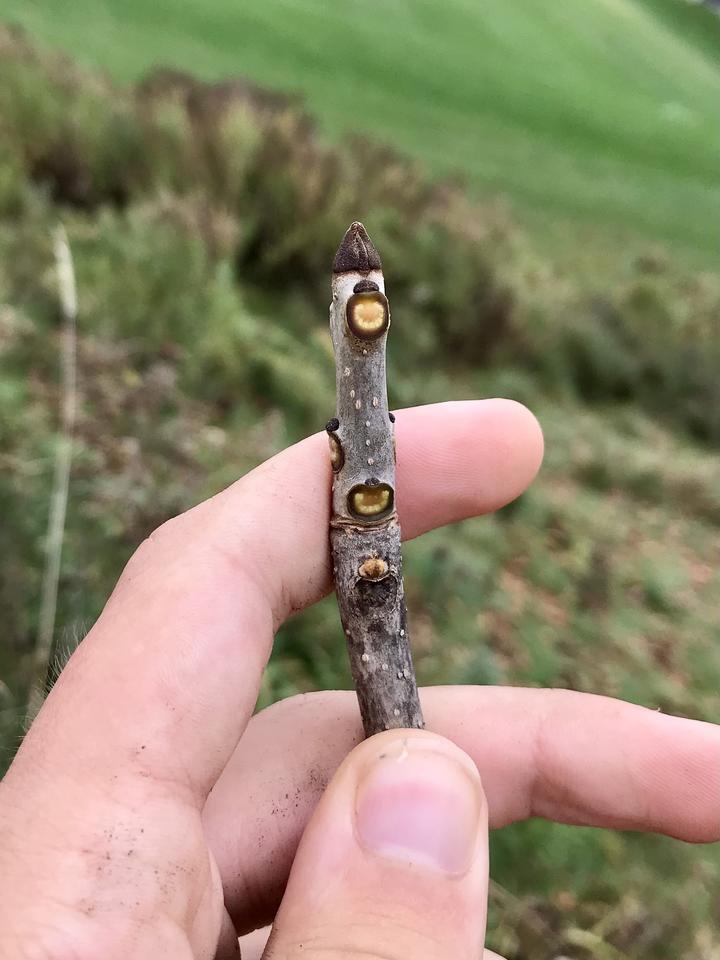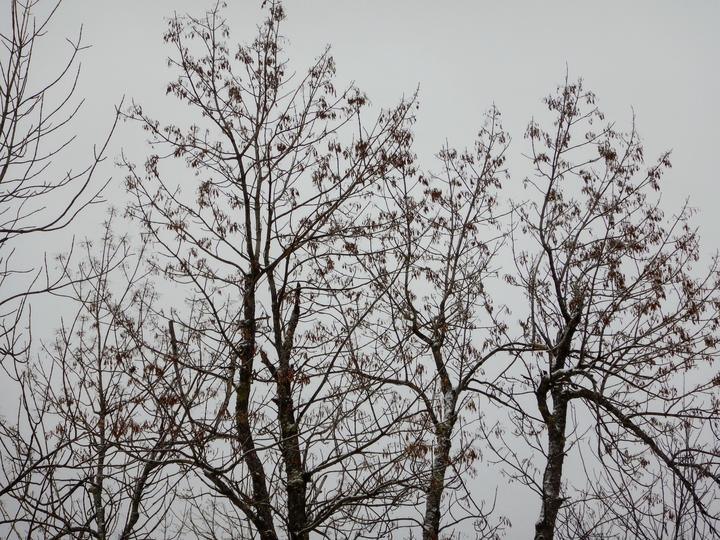More names for this tree
Anishinaabemowin: Baapaagimaak
The Dakota and Anishinaabe were among the earliest people to name Minnesota’s plants and animals, as well as to understand them in relation to Minnesota’s climate and seasons. Those original names are still in use, and several are included on the Season Watch website. However, complete translations were not available.
Latin (or scientific name): Fraxinus nigra
The scientific community has a convention of assigning agreed-upon Latin names to every kind of organism. Using scientific names helps people communicate confidently about the same organism and organize lifeforms based on how closely related they are.
Page contents
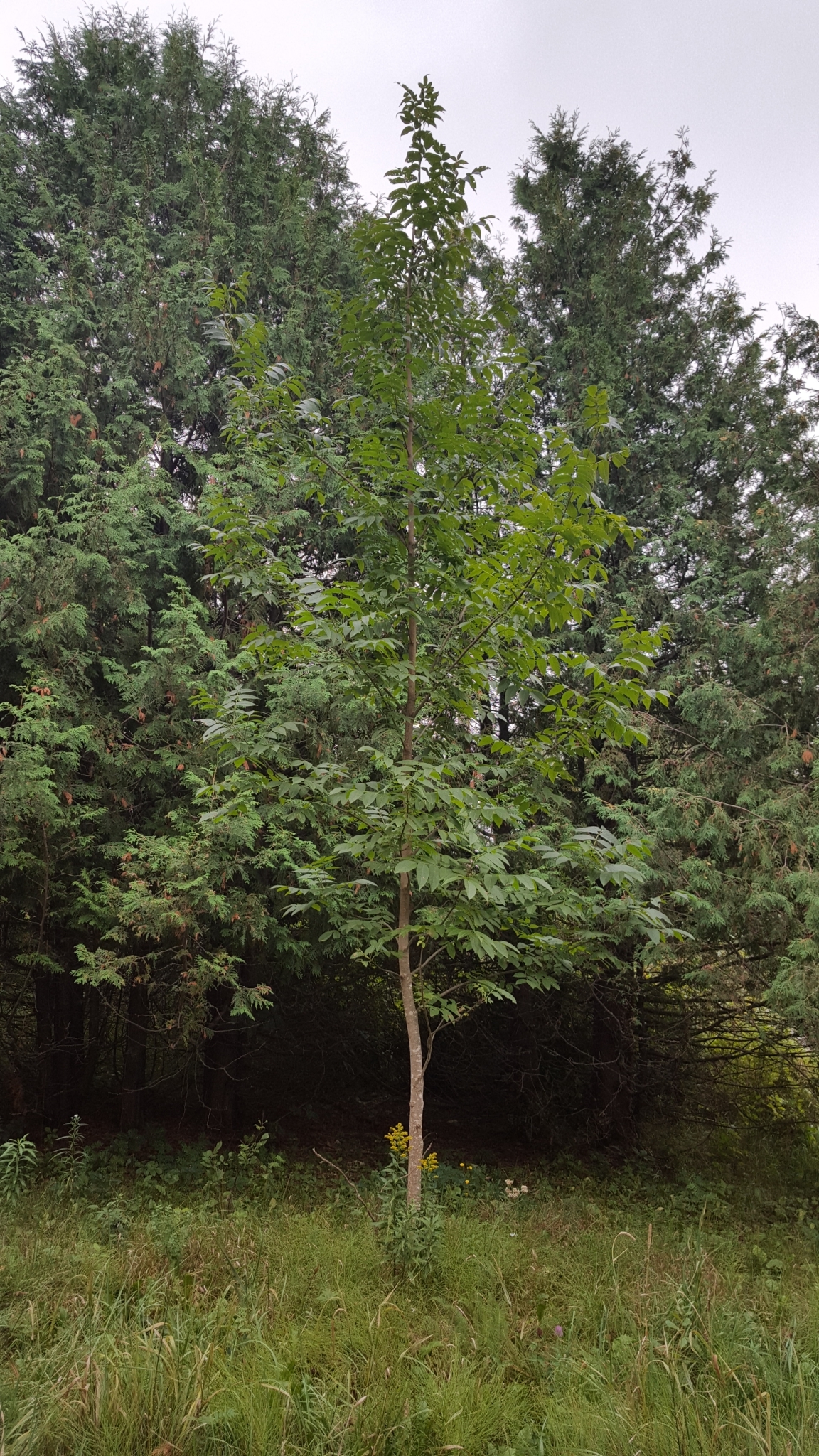
Photo © Norma Malinowski, some rights reserved (CC-BY-NC)
iNaturalist observation
About the black ash
- Black ashes have compound leaves, meaning a single leaf is composed of multiple leaflets. The leaflets are oval-shaped with fine serrations around the edge. Each compound leaf is made up of seven to eleven leaflets.
- Growing throughout Minnesota, black ash can be found in low-lying, moist areas such as bogs and river beds.
- Black ashes have both male and female flowers growing on the same tree. The purplish flowers emerge before the leaves in early spring.
- The fruit of the black ash is called a samara. The samara is composed of a single seed and a paddle-shaped wing, allowing the seed to be dispersed by the wind.
- A deciduous tree, black ash leaves change color and drop to the ground in the fall.
- Unfortunately, black ash trees are highly susceptible to the invasive emerald ash borer beetle.
Visual guide to phenology
Watch for the appearance of leaves, flowers, and fruits. Take notice of when flowers open and fruits ripen.
Note to observers
This page explains general clues to watch for when observing black ash phenology. However, this page does not instruct observers on how to identify this plant or collect data in a standardized way.
- For help with identification, see Minnesota Wildflowers.
- For guidance on collecting data, see Nature’s Notebook.
Graphs and historical data
Note: The Orientation Center provides a map, as well as information on reading graphs; interpreting summary statistics, who collected the data and how; and how to download datasets for independent exploration.
Leaf budbreak
- Earliest: May 19 (occurred in 2012)
- Average: May 27
- Latest: June 6 (occurred in 1993)
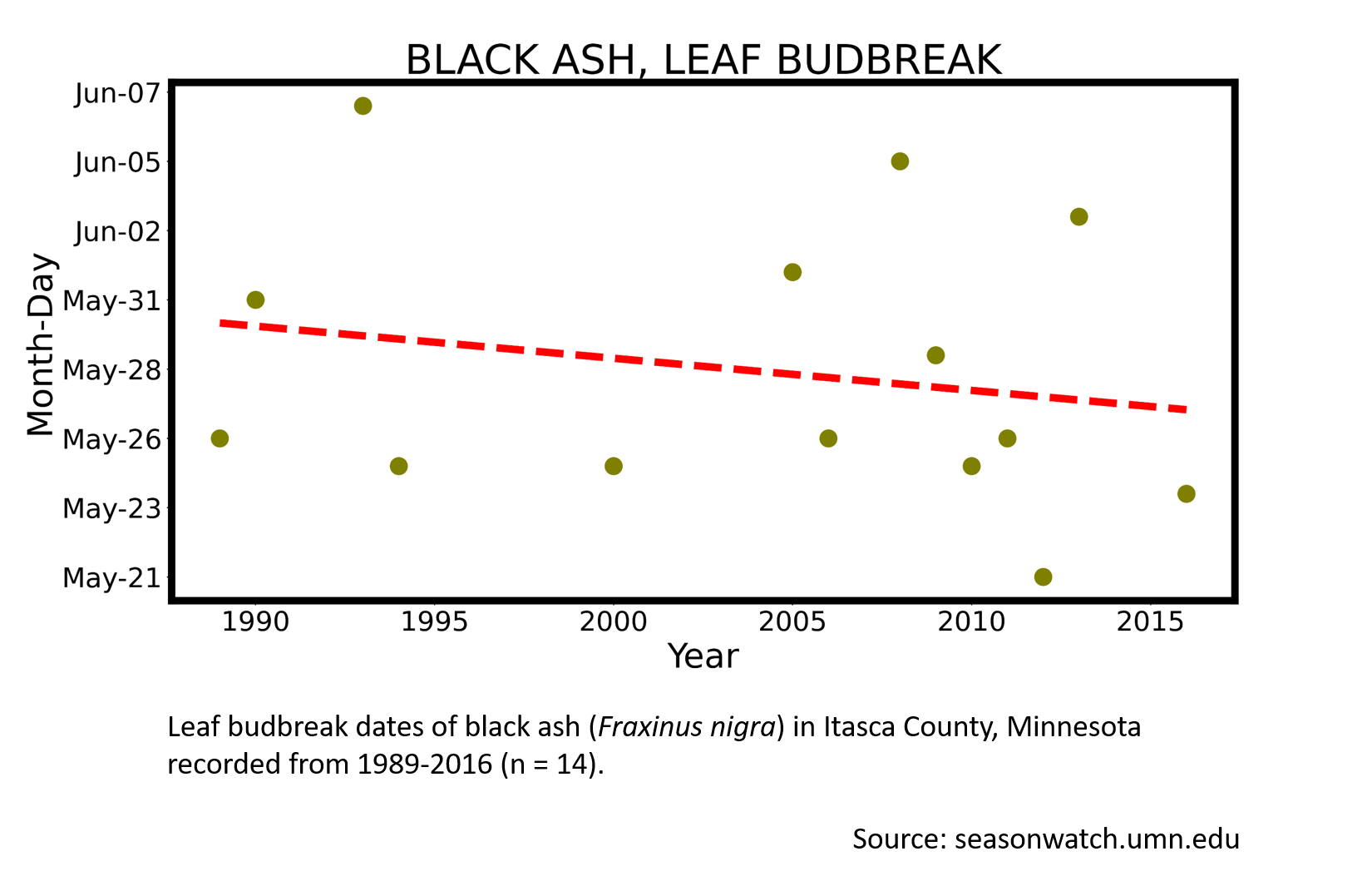
All leaves colored
- Earliest: August 19 (occurred in 1986)
- Average: September 6
- Latest: September 17 (occurred in 2008)
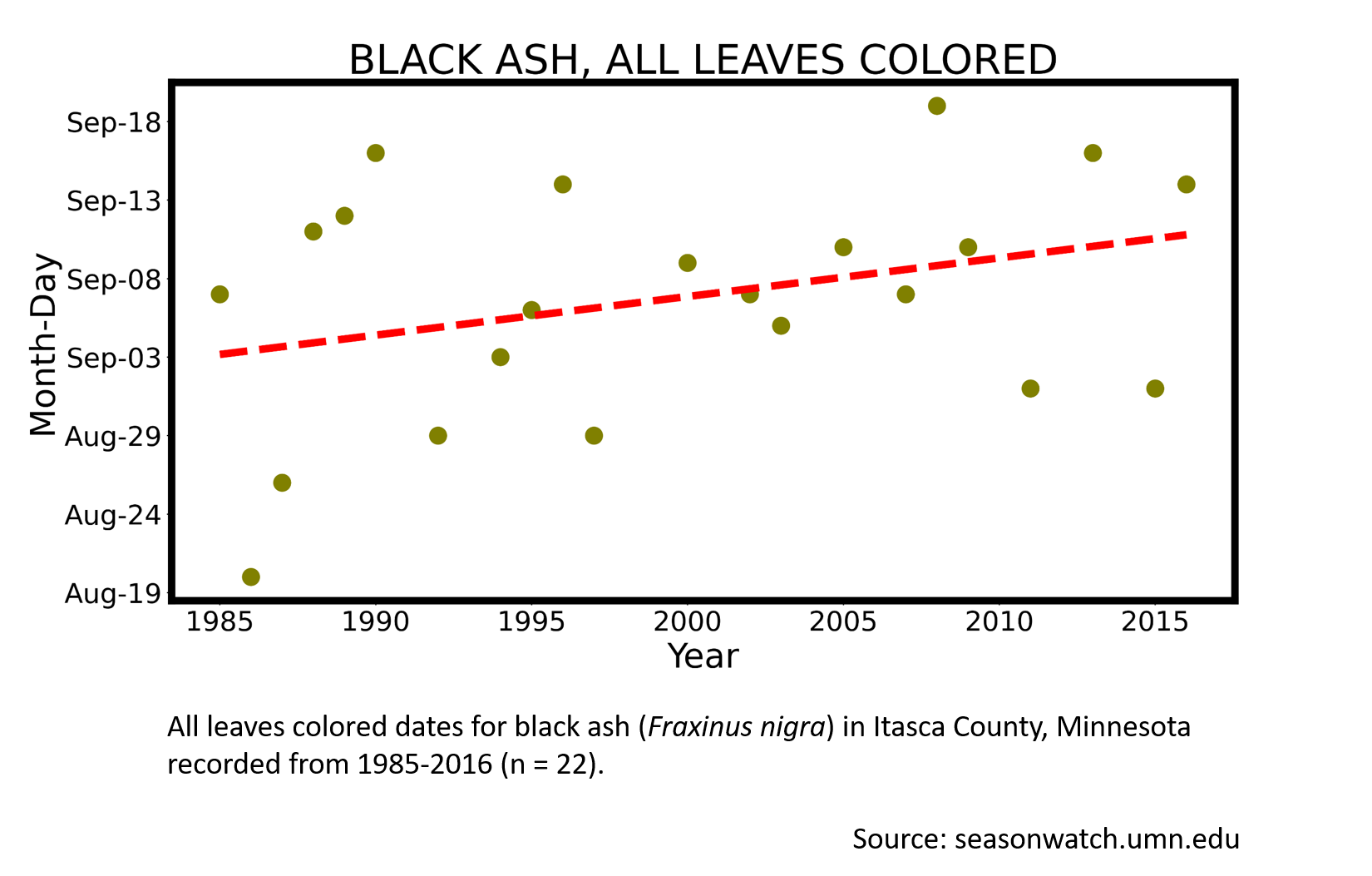
Keep exploring Season Watch
Keep exploring Season Watch
Co-author: Audrey Negro, Minnesota Master Naturalist
